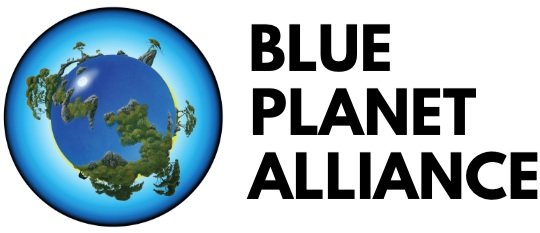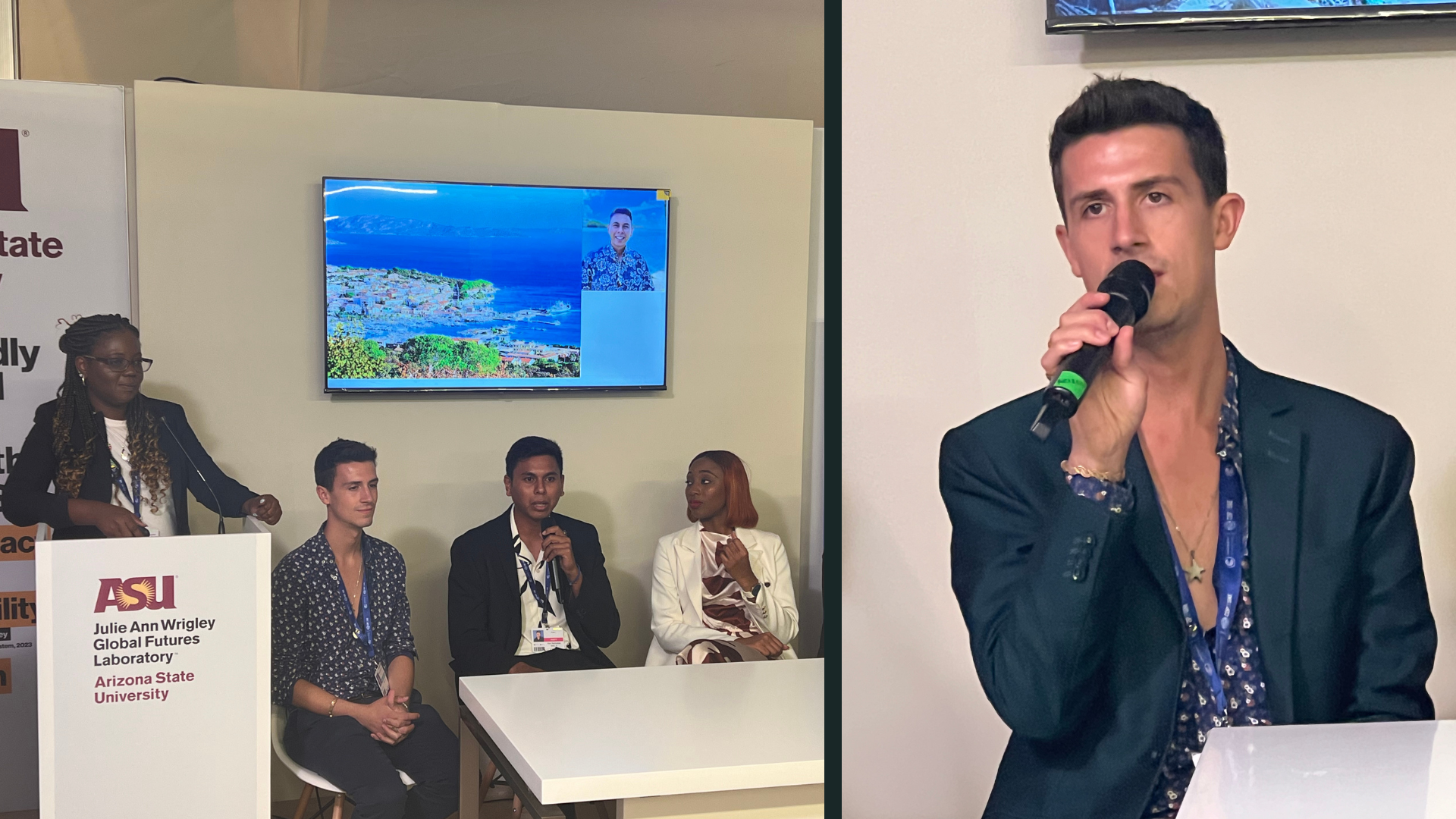Bridging the Gap
By Mark Haver
The following blog is part of a series written by Blue Planet Alliance Global Ambassadors about their experiences in Dubai at the UN climate conference (a.k.a. COP28) last December, where they took part in more than 20 events. Blue Planet Alliance Global Ambassadors are a cohort of international youth that was founded by Blue Planet Alliance in 2022 at the Our Oceans Conference in Palau, to honor and empower young people from the ages of 16 to 30 to help spread our global mission of transitioning to 100% renewable energy. Learn more about the program — and to apply to be a BPA Global Ambassador here.
This was my third year at COP, and every year I am more and more impressed by the incredible work that I see young people bringing to and sharing at this UN climate change conference. I cannot understate how motivating it is to be inspired by the passion and hard work they bring to their unique projects.
While it’s incredible to see the ocean-climate silo dissolve, our ocean’s greatest threat is a warming climate. COP28 made me feel that we are not striving for 1.5 degrees Celsius, but rather, for 2 degrees of warming. This is reflected in the Parties’ Nationally Determined Contributions (NDCs). In other words, the Parties’ commitments are just not ambitious enough.
If we implemented all the commitments in these NDCs, we would still be short in meeting our emissions and warming targets. This implementation gap between commitments and actual mitigation measures is seriously concerning. Whatever Parties commit to in their NDCs and National Adaption Plans (NAPs) must still be translated into national policy, which is often complicated by political agendas. When national policy gets passed, there is another implementation gap between what the law intended and its execution on-the-ground. The Global Stocktake revealed that countries are not implementing their commitments to climate action. With a lack of ambition in the existing commitments and the compounding problem of the implementation gap, this gives me a lot of anxiety and cynical skepticism for Parties to achieve necessary 2030 goals to prevent climate tipping points.
For COP29, we need to see implementation action from countries on their existing commitments, and we need to see commitments that limit warming to 1.5 degrees, no more than that. Blue Planet Alliance is a key vehicle for that action on implementation. Even though islands are the most dependent on fossil fuels for energy sources, Blue Planet Alliance shows us that ambition can match urgency, no matter how “impossible.” Between the strides made for Blue Planet Alliance and the incredible projects of fellow Ambassadors, I am not just given hope, but determination!
Mark Haver is a Blue Planet Global Ambassador based in the USA.

